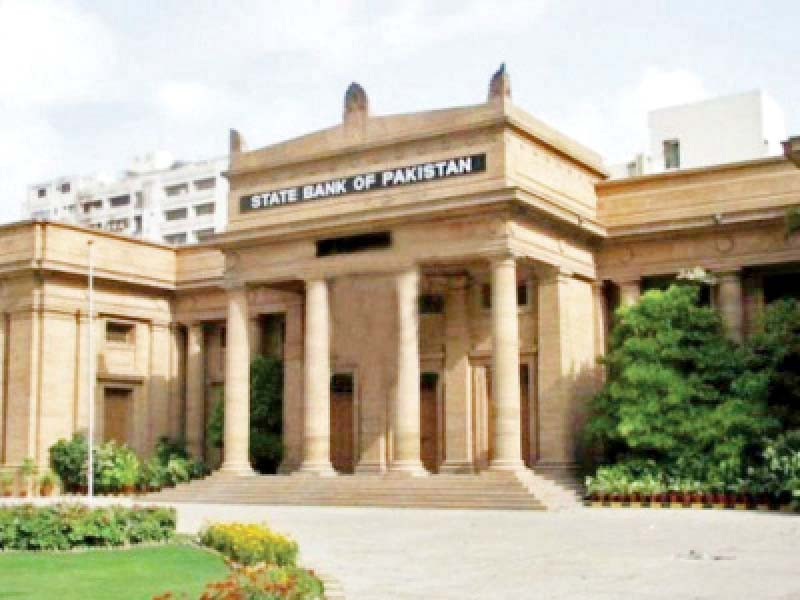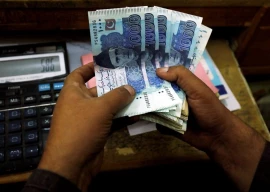
In line with market expectations, Pakistan’s central bank has left its key policy rate unchanged at 15% for the next seven weeks to support economic growth and contain inflation. “Based on currently available information, GDP (gross domestic product/economic) growth could fall to around 2% in the current fiscal year 2022-23 compared to the previous forecast of 3-4% before the floods,” said the State Bank of Pakistan (SBP) in its latest monetary policy statement (MPS) issued on Monday.
“Meanwhile, higher food prices could raise average headline inflation in FY23 somewhat above the preflood projection of 18-20% (for the full year).” The policy rate remains a tool for the central bank to create a balance between inflation readings and economic growth. “The existing monetary policy stance (policy rate at 15%) strikes an appropriate balance between managing inflation and maintaining growth in the wake of the floods,” the central bank said in the policy statement.
For the second consecutive MPS in the past three months, “SBP has maintained the rate at 15%.” Earlier, it raised the rate cumulatively by 800 basis points from September 2021 to July 2022 to 15%. With the pressure of higher food and cotton imports, the current account deficit is likely to remain mute as lower textile exports will be largely offset by slower domestic demand and lower global commodity prices. “As a result, any deterioration in the current account deficit is expected to be contained, leaving it in the vicinity of the previously forecast 3% of GDP.”
The impact on the current account can be cushioned further with international assistance in the form of current transfers. Given secured external financing and additional commitments in the wake of the floods, “Foreign exchange reserves should improve through the course of the year.” The central bank noted that the recent floods altered the macroeconomic outlook and a fuller assessment of their impact is underway. While on one hand, SBP says inflation could be higher and more persistent due to the supply shock to food prices, it is important to ensure that this additional impetus does not spill over into broader prices in the economy. On the other, growth prospects have weakened, and this should reduce demand-side pressures and suppress underlying inflation.
“In light of these offsetting considerations, the MPC considered it prudent to leave the monetary policy settings unchanged at this stage,” said the central bank. Four major developments have taken place in the domestic economy since the last monetary policy meeting held in August 2022, said the SBP. Firstly, the desired moderation in economic activity has become more visible and entrenched, signalling that the tightening measures implemented over the last year are gaining traction. With growth likely to slow further in the aftermath of the floods, this tightening will need to be carefully calibrated going forward. Second, headline (monthly) inflation fell to 23.2% in September after peaking at 27.3% in August as expected “due to an administrative cut in electricity prices.
However, core inflation continued to drift upwards in both rural and urban areas.” Thirdly, the current account and trade deficits narrowed significantly in August and September, and the rupee has recouped some of its losses following the recent depreciation. And lastly, the combined 7th and 8th review under the ongoing IMF programme was completed on August 29, 2022, releasing a tranche of $1.2 billion. In line with slowing economic activity, the central bank said, the private sector credit has seen a net retirement of Rs0.7 billion so far, this fiscal year, compared to an expansion of Rs62.6 billion during the same period last year. This decline in credit mainly reflects a retirement of working capital loans and a sharp fall in consumer finance.
A continuation of prudent monetary policy and orderly movements in the rupee should help contain core inflation going forward. At the same time, curbing food inflation through administrative measures to resolve supply-chain bottlenecks and any necessary imports should be a high priority. The economy has slowed considerably since the last MPC meeting. “Most demand indicators were lower in both July and August than in the same period last year — including the sale of cement, POL (petroleum, oil, and lubricant), and automobiles,” SBP noted. On the supply side, electricity generation declined for the third consecutive month in August, falling by 12.6% compared to the same month of the last year.
In July, large-scale manufacturing (LSM) declined by 1.4% compared to the same month of the last year, “its first contraction in two years, largely driven by broad-based deterioration in domestically-oriented sectors.” “Looking ahead, the recent floods are likely to adversely affect the output of cotton and rice as well as the livestock sector this year,” warned the central bank.
















COMMENTS
Comments are moderated and generally will be posted if they are on-topic and not abusive.
For more information, please see our Comments FAQ